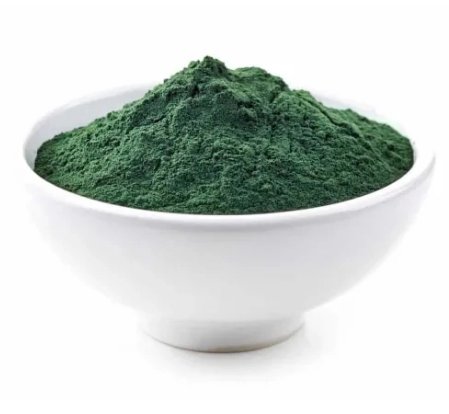-

Trypan Blue CAS:72-57-1 Manufacturer Price
Trypan Blue is a diazo dye that is commonly used in biology and medicine. It is frequently employed as a vital stain to selectively color dead cells, allowing for the differentiation of live and dead cells in cell culture. Trypan Blue is often used in cell viability assays to assess cell health and is also utilized in laboratory research, such as in counting viable cells using automated cell counters. Additionally, it has applications in ophthalmic surgery, where it is used to stain the anterior capsule of the lens during cataract surgery to aid in visualization.
-

xylenecyanol ff CAS:2650-17-1 Manufacturer Price
Xylene cyanol FF is a tracking dye commonly used in molecular biology applications, such as agarose and polyacrylamide gel electrophoresis. It is used to monitor the progress of the DNA or RNA samples through the gel during electrophoresis, as well as to estimate the migration distance of the nucleic acid. Xylene cyanol FF typically migrates with a size range of DNA or RNA fragments that have approximately 4,000 – 6,000 base pairs.
-

Amido Black 10B CAS:1064-48-8 Manufacturer Price
Acriflavine is a fluorescent dye that is commonly used in biological and medical applications to stain and visualize nucleic acids, particularly DNA and RNA. It is also used in microbiology and hematology for distinguishing between living and dead cells.
-

Methyl green CAS:7114-03-6 Manufacturer Price
Methyl green is a biological dye commonly used in histology and cytology to selectively stain and visualize nucleic acids (DNA and RNA) under a microscope.
-

BS Grade CAS:14726-29-5 Manufacturer Price
Fast Blue RR salt is a chemical compound commonly used in biological research as a staining dye for proteins. It is known for its fast and reliable staining properties, and is commonly used in techniques such as SDS-PAGE and Western blotting. This dye is especially useful for visualizing protein bands and accurately determining molecular weights in protein electrophoresis.
-

1-β-D-Arabinofuranosyluracil CAS:3083-77-0
1-β-D-Arabinofuranosyluracil is a nucleoside analog with antiviral activity. It acts by inhibiting the replication of herpes simplex virus and varicella-zoster virus. This compound, also known as vidarabine, is used to treat certain viral infections, particularly those affecting the skin and eyes. It may be administered as a topical ointment or as an injectable medication.
-

MTT (Thiazolyl blue tetrazolium bromide) CAS:298-93-1
MTT, or Thiazolyl blue tetrazolium bromide, is a yellow tetrazole compound that is commonly used in cell biology and biochemistry to assess cell viability and proliferation. When added to living cells, MTT is converted by mitochondrial enzymes into a purple formazan product, which can be quantified spectrophotometrically. This assay is widely employed to measure cell metabolic activity and has applications in drug development, cytotoxicity testing, and studying cell signaling pathways. MTT is a valuable tool for researchers studying cell biology and exploring the effects of various compounds on cellular health and function.
-

Carmine CAS:1390-65-4 Manufacturer Price
Carmine is a bright red pigment derived from cochineal insects. It is commonly used in food, cosmetics, textiles, and artwork. Its vibrant hue makes it popular for adding color to a wide variety of products.
-

Hematoxylin CAS:517-28-2 Manufacturer Price
Hematoxylin is a natural dye extracted from the logwood tree, commonly used in histology and pathology for staining cell nuclei blue. It is often used in combination with eosin to provide contrast in tissue samples and is a widely used staining technique in medical and biological laboratories.
-

Nitrotetrazolium blue chloride CAS:298-83-9
Nitrotetrazolium blue chloride, often abbreviated as NBT, is a chemical compound commonly used as a substrate to detect the presence of certain enzymes, such as nitroreductases, in biological samples. When NBT is reduced by these enzymes, it forms an insoluble formazan product, producing a blue or purple color that can be visually or spectrophotometrically quantified. This reaction is frequently employed in research to study enzyme activity, particularly in immunology and microbiology. Additionally, NBT has been utilized in various assays to understand redox reactions and cellular oxidative stress.
-

Hoechst 33258 CAS:23491-45-4 Manufacturer Price
Hoechst 33258 is a fluorescent dye commonly used in biological research for staining DNA. It binds specifically to AT-rich regions of DNA and emits blue fluorescence when excited by ultraviolet light. This property makes Hoechst 33258 useful for visualizing and studying DNA in cells and tissues using fluorescence microscopy and flow cytometry.
-

Bisbenzimide H33342 CAS:23491-52-3 Manufacturer Price
Bisbenzimide H33342 is a fluorescent dye commonly used in molecular biology and cell biology research. It is known for its ability to bind to DNA and is often used for visualizing and staining DNA in microscopy and flow cytometry applications. Additionally, it is employed for DNA quantification and cell cycle analysis. Bisbenzimide H33342 is popularly used as a counterstain in fluorescence microscopy to visualize cell nuclei in a variety of biological samples.

